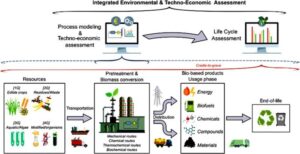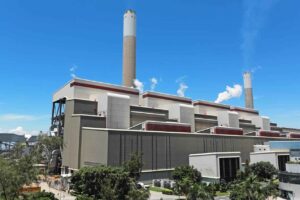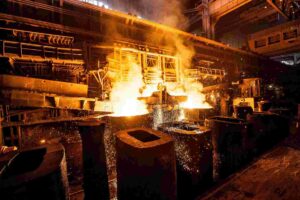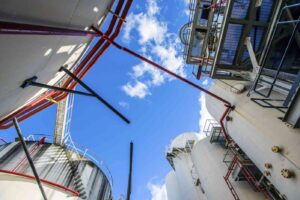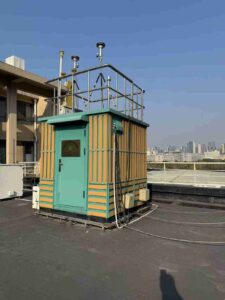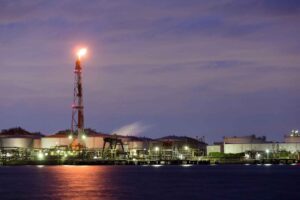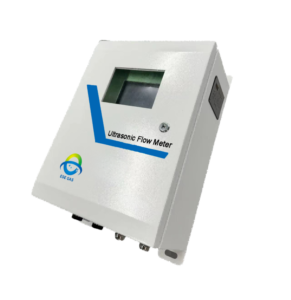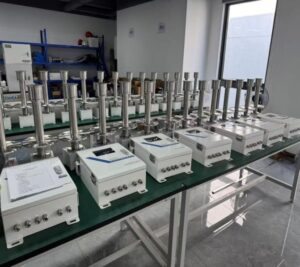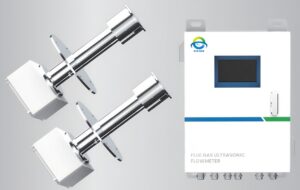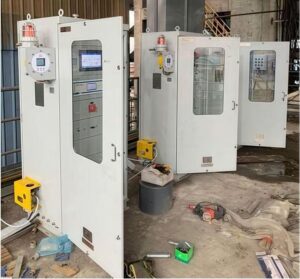As the main provider of global energy, the oil and gas industry plays a vital role in economic development. However, the flue gas emissions generated by the industry during the production process also have a significant impact on the environment. With increasingly stringent environmental regulations, how to effectively monitor and control flue gas emissions has become a key challenge facing the oil and gas industry. As an advanced environmental monitoring technology, the continuous emission monitoring system (CEMS) is gradually becoming an important tool for the industry to achieve environmental compliance. This blog will explore in depth the application of CEMS in the oil and gas industry, its advantages, and its key role in emission monitoring.
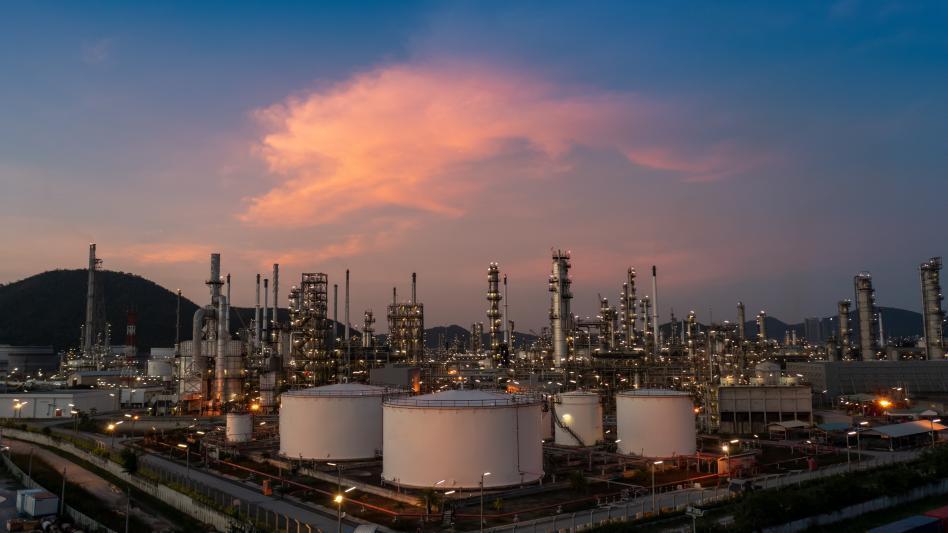
Overview of Flue Gas Emissions in the Oil and Gas Industry
As the world’s main energy supplier, the production and processing of the oil and gas industry inevitably brings various environmental challenges. These challenges involve multiple aspects such as air, water resources and soil, with potential impacts on the environment and human health. The following is a detailed look at the key environmental challenges facing the oil and gas industry:
1. Air pollution
- Flue gas emissions: The production and processing of oil and natural gas releases a large amount of flue gas, including carbon dioxide (CO2), sulfur dioxide (SO2), nitrogen oxides (NOx), carbon monoxide (CO), and particulate matter. These pollutants reduce air quality and cause acid rain, photochemical smog, and ground-level ozone formation causing long-term environmental impacts.
- Methane emissions: As the main component of natural gas, methane is a potent greenhouse gas, and its concentration in the atmosphere directly affects global climate change. The oil and gas industry releases methane during extraction, transportation and processing, so effectively controlling its emissions is particularly important for climate change.
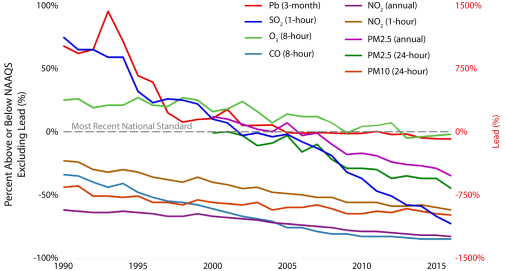
2. Water pollution
Water treatment and wastewater discharge: The oil and gas industry requires a large amount of water resources for processes such as extraction, processing, and cooling. The wastewater generated by these activities may contain heavy metals, chemicals, and other harmful substances. If not effectively treated, it may be directly discharged into water bodies, causing pollution and damage to water quality and aquatic ecosystems.
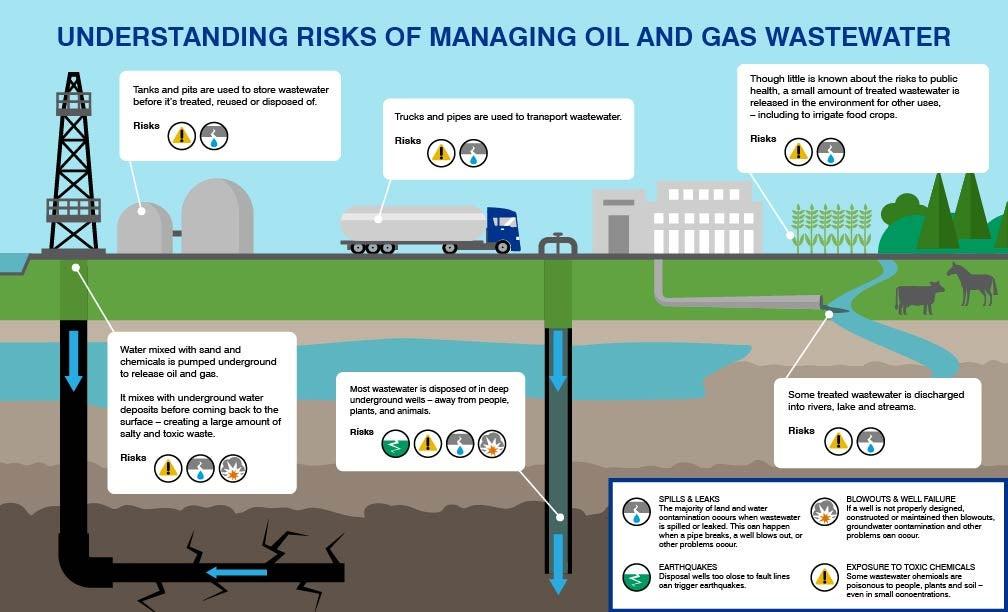
3. Impacts on soil and ecosystems
- Soil pollution: Accidents or spills common in the oil and gas industry may cause oil, petrochemicals or other harmful substances to enter the soil, causing soil pollution. This pollution not only affects agriculture and vegetation growth, but may also cause long-term and irreversible impacts on the soil ecosystem.
- Biodiversity loss: Oil and gas development activities often require large tracts of land, leading to biodiversity loss and habitat destruction. Wildlife and plants may be threatened by habitat loss or modification, and the ecological balance may be disrupted.
The environmental challenges facing the oil and gas industry are multi-layered, complex and long-standing. Effective management and reduction of flue gas emissions, optimization of water resource utilization, and strengthening of environmental monitoring and protection measures are key steps to achieve sustainable development. Through technological innovation, strengthening of regulations and social participation, the oil and gas industry can minimize the adverse impact on the environment while ensuring energy supply, and move towards a cleaner and more sustainable development path.
Working Principle and Composition of CEMS
working principle
CEMS continuously collects, analyzes, and records the concentration data of various pollutants in flue gas emissions to monitor emissions in real-time. Its core technologies include extraction and in-situ types. Extraction CEMS extracts flue gas through a sampling probe, and sends it to the analyzer for measurement after cooling and dust removal; in-situ CEMS measures flue gas directly in the flue without complex gas pretreatment.
System composition
CEMS mainly consists of the following parts:
- Sampling system: includes sampling probe, sampling pipeline, and pretreatment unit, used to collect and process flue gas samples from the flue.
- Gas analyzer: used to measure the concentration of pollutants in flue gas. Common analyzer types include infrared, ultraviolet, chemiluminescence, and electrochemical analyzers.
- Data acquisition and processing system: used to record, process, and store monitoring data, and transmit the results to the central control system.
- Calibration system: used to calibrate the analyzer regularly to ensure the accuracy and reliability of monitoring data.
Application of CEMS in the Oil and Gas Industry
The application of continuous emission monitoring systems (CEMS) in the oil and gas industry is to effectively monitor and control flue gas emissions, ensure that enterprises comply with environmental regulations and protect the surrounding environment. The following details several typical application cases of CEMS in the oil and gas industry:
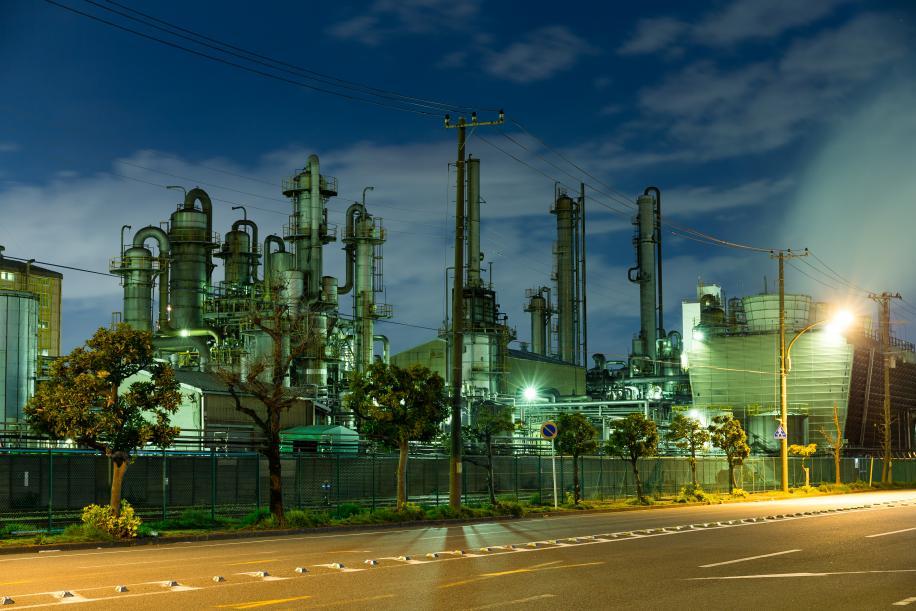
1. Oil refineries and petrochemical plants
Refineries and petrochemical plants are core production facilities in the oil and gas industry, and their production processes generate a large amount of flue gas and harmful substances. CEMS is widely used in these plants to monitor and record key pollutants in flue gas, such as:
Sulfur dioxide (SO2) and nitrogen oxides (NOx): During the refining process, the exhaust gas produced by combustion contains SO2 and NOx, which are harmful to the environment and human health. CEMS monitors the concentration of these pollutants in real time through gas analysis instruments to ensure that emissions are within the permissible range required by regulations.
Particulate matter: During the refining process, particulate matter emitted from chimneys may contain a variety of particle sizes and chemical compositions, posing potential risks to air quality and health. CEMS can accurately measure the concentration and size distribution of particulate matter, helping companies implement necessary control measures, such as optimized operation of electrostatic precipitators and filters.
2. Natural gas processing plant
Natural gas processing plants are an important part of refining and processing natural gas extracted from crude oil. In these plants, the application of CEMS is mainly concentrated in the following aspects:
- Methane emissions: As the main component of natural gas, methane is a potent greenhouse gas. During the natural gas processing process, methane leaks or incomplete combustion can become a significant source of emissions. CEMS can accurately monitor and measure methane emissions, helping companies implement emission reduction measures and improve processes to reduce greenhouse gas emissions.
- Volatile Organic Compounds (VOCs): Natural gas processing plants often need to deal with large amounts of VOCs, which have potential impacts on air quality and the ozone layer. CEMS helps companies control their emissions and reduce negative impacts on the environment by monitoring the concentration of VOCs.
3. Gas-fired power plants
Gas-fired power plants use gas as the main fuel to generate electricity. The application of CEMS in these plants mainly focuses on the following aspects:
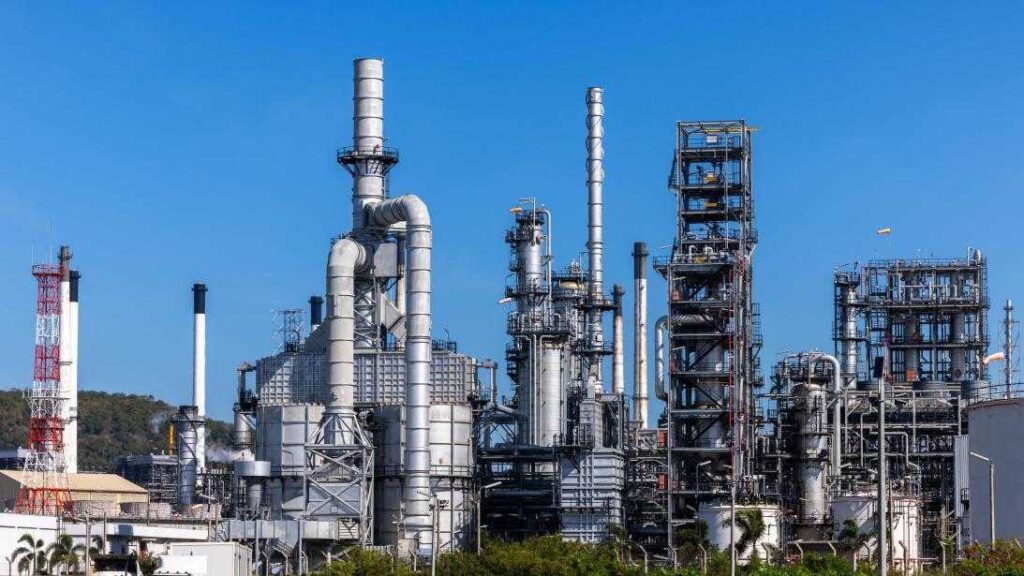
- Carbon monoxide (CO) and nitrogen oxides (NOx): The exhaust gas produced by gas combustion often contains pollutants such as CO and NOx, which not only affect air quality but also may cause health risks to surrounding residents and the ecological environment. CEMS can monitor the concentration changes of these pollutants in real-time, helping gas power plants optimize the combustion process and reduce emissions.
- Particle matter: Particle matter emitted from the chimneys of gas power plants is also an important source of environmental pollution. CEMS uses a particle matter monitoring system (PM monitoring system) to monitor the size, concentration, and chemical composition of particulate matter in real-time to ensure that emissions meet regulatory requirements.
Technical challenges and solutions faced by CEMS
As a key environmental monitoring tool in modern industry, continuous emission monitoring systems (CEMS) face a series of technical challenges. These challenges involve data accuracy, system stability, performance under environmental conditions, etc. The following details the main technical challenges faced by CEMS and the corresponding solutions:
1. Challenges of environmental conditions
High temperature and high humidity environment: In industrial sites such as refineries and gas power plants, the flue gas temperature and humidity may be very high, which places severe demands on CEMS sensors and equipment. High-temperature environment may affect the stability and accuracy of the sensor, and high humidity environment may cause the sensor to become damp or damaged.
solution:
Select high temperature and high humidity resistant sensors and materials: Develop and select sensors and materials suitable for high temperature and high humidity environments to ensure they can work stably under extreme conditions.
Good cooling and ventilation system: Regularly maintain and optimize the cooling and ventilation system of CEMS equipment to ensure the normal operation of the equipment in a high-temperature environment.
2. Data accuracy and sensitivity
Low-Concentration Pollutant Monitoring: Some pollutants are present in low concentrations in emissions, such as methane and other volatile organic compounds (VOCs), requiring CEMS systems to have high sensitivity and accuracy to accurately monitor and measure low concentrations of pollutants.
solution:
Use high-precision sensors: Select and use sensors with high precision and low detection limits to ensure accurate monitoring of low-concentration pollutants.
Calibration and Verification: CEMS systems are calibrated and verified regularly to ensure data accuracy and reliability.
3. Data processing and real-time monitoring
Big data processing: The amount of data generated by the CEMS system is huge, and how to effectively process and analyze this data becomes a challenge. In particular, real-time monitoring and timely response to abnormal situations are required.
solution:
Data management and storage system: Establish an efficient data management and storage system capable of processing and storing large amounts of real-time monitoring data.
Real-time monitoring and alarm systems: Develop and implement real-time monitoring and alarm systems that can quickly respond to abnormal situations such as pollutants exceeding standards or equipment failures.
4. System reliability and maintenance
Equipment failure and maintenance: Sensors and equipment in the CEMS system may face the risk of aging, damage or failure after long-term operation. Ensuring the system’s long-term stable operation is a key challenge.
solution:
Regular maintenance and inspection: Establish a regular maintenance schedule, including cleaning, calibration, and replacement of sensors.
Spare parts and spare equipment: Prepare sufficient spare parts and spare equipment to deal with unexpected failures and equipment damage.
5. Regulatory requirements and standards compliance
Strict regulatory requirements: Different regions and countries may have different requirements for emission limits and environmental monitoring. The CEMS system must be able to meet the requirements of various regulations and ensure data compliance.
solution:
Customized system design: Customized CEMS system design and configuration according to local regulatory requirements, ensuring the system complies with local and international environmental monitoring standards.
Continuous improvement and upgrading: As regulations and standards are updated, the CEMS system is continuously improved to ensure that it always meets the latest environmental requirements and technical standards.
Summarize
As an important environmental monitoring tool in the oil and gas industry, CEMS faces many technical challenges. Through continuous technological innovation, sensor performance improvement, data processing capability enhancement and strict equipment maintenance management, these challenges can be effectively addressed, the stability, accuracy and reliability of the CEMS system can be improved, and a positive contribution can be made to environmental protection and sustainable development.
Future Development Trends
Technology Upgrade
With the development of sensor technology and data processing technology, the monitoring accuracy and reliability of CEMS will continue to improve. In the future, intelligent CEMS systems based on the Internet of Things and big data analysis are expected to achieve more comprehensive emission monitoring and early warning.
Regulatory push
The continuous updating and tightening of environmental regulations will promote the widespread application of CEMS in the oil and gas industry. Enterprises need to actively respond to regulatory changes, update and upgrade monitoring systems in a timely manner, and ensure emission compliance.
Industry collaboration
In the future, the cooperation between enterprises in the oil and gas industry and environmental monitoring equipment suppliers will become closer, jointly promoting the innovation and application of CEMS technology and improving the overall environmental protection level of the industry.
Conclusion
As an advanced environmental monitoring technology, CEMS plays a vital role in the oil and gas industry. Through real-time and accurate flue gas emission monitoring, CEMS not only helps enterprises achieve environmental compliance and reduce environmental pollution but also provides a solid guarantee for the sustainable development of enterprises. With the continuous advancement of technology and the improvement of environmental protection requirements, the application prospects of CEMS in the oil and gas industry will be broader. Enterprises should actively promote the deployment and application of CEMS, continuously improve the level of environmental protection management, and achieve green development goals.





